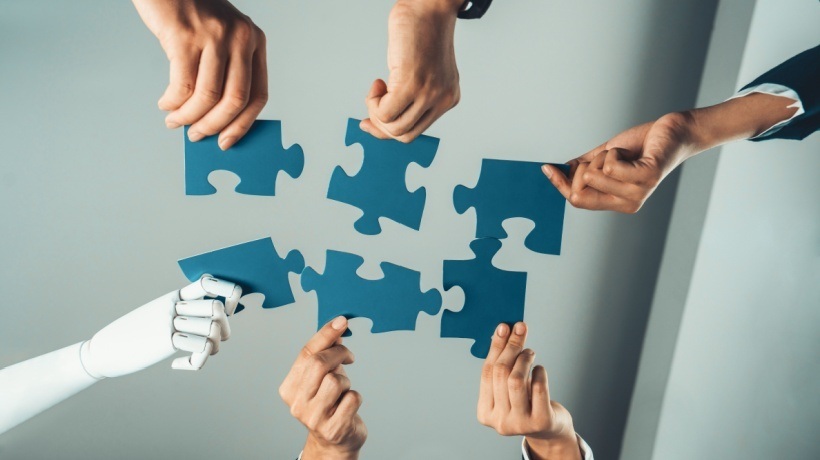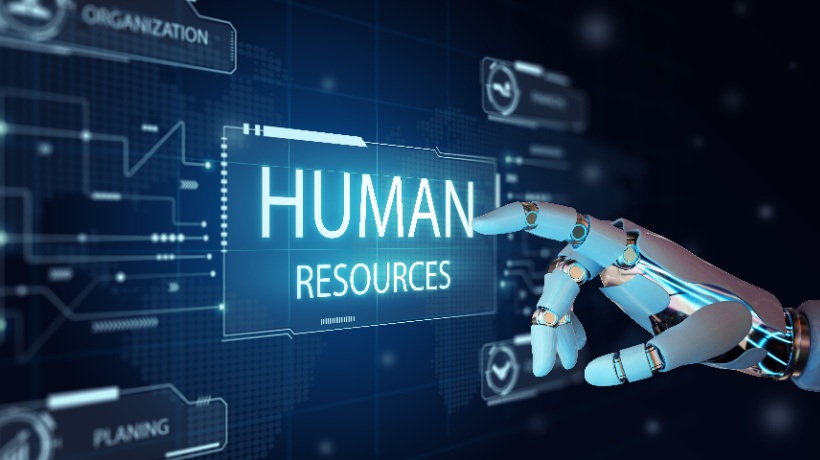The Myths Surrounding Implementing Generative AI In HR
Before implementing generative AI in any Human Resources activity, HR professionals should test the technology with the help of IT, Legal, and Subject Matter Experts. This will not only assess the usefulness and usability of AI but also debunk myths surrounding this groundbreaking technology. For starters, many professionals fear that GenAI might replace humans since it can perform tasks faster and more accurately. However, the technology itself can't operate unless people learn how to handle it, meaning that individuals can work collaboratively with AI and delegate to it time-consuming or dangerous processes. Another concern is about privacy and bias, as many HR professionals believe the algorithm can be discriminatory and potentially unsafe. Fortunately, technology can be trained, and if people provide it with the right data sets and descriptions, it can eliminate pre-existing prejudice. When it comes to privacy, IT should be involved to safeguard the company's systems.
Reasons You Should Implement Generative AI In HR Functions
Enhanced Productivity
AI tools can't only create content for marketing purposes but also streamline time-consuming processes like onboarding, recruiting, and development opportunities. For instance, chatbots may be used as personal assistants for employees, reminding them of their upcoming training sessions and the next steps of their onboarding. Additionally, GenAI can analyze data from these processes, create feedback, and generate reports for HR managers to read carefully.
Personalized Experiences
Employee engagement is twice as high as when personalized messages are sent to professionals. However, large companies may be unable to personalize their communication manually. Therefore, they can implement generative AI in their HR practices and connect with their team members while increasing their motivation. AI chatbots can understand both context and content, meaning that they are smarter than traditional chatbots, so they can take over simple tasks while HR professionals deal with complex matters where the human touch is necessary.
Data-Driven Talent Management
Most companies are invested in driving their employees' development and analyzing their performance to provide the most fitting solutions. Generative AI can examine large sets of data, recognize skill gaps, and locate training and growth opportunities for each individual. It can also cater to their requirements based on team members' career goals. Therefore, decisions are made based on people's needs and hard facts that serve employees and the company strategy.
Shaping The Future
World digitization has made the need for implementing generative AI in HR functions even more pressing. By streamlining and delegating mundane and repetitive tasks, HR professionals can focus on helping employees navigate the complex technological landscape that AI has created. Still, team members need training so they have the necessary skills to process AI-powered tools. Maintaining a balance between human intervention and digital assistance is pivotal to ensuring humans remain motivated and needed.
Ways Artificial Intelligence Can Help
Address Employee Skill Gaps
The ever-changing corporate and technological landscape calls for HR professionals to stay up to date, meaning that employees should upskill and reskill. GenAI can analyze databases where employee performance is visible and notice skill gaps that hinder progress. After making a company-wide skills assessment, AI can create a methodical training strategy so all employees receive the learning opportunities they need. Therefore, team members feel that they are contributing not only to their personal development but also to team success.
Recruit Through Talent Intelligence
Thanks to implementing generative AI in HR functions, businesses can now access data regarding their employees and future candidates. Talent intelligence refers to people analytics, sourcing intelligence, and planning joining forces to drive growth. Through LLM-based systems, companies can identify who is ready for a promotion, make changes between departments, notice pay disparities, and source their candidates. Moreover, many tools are available that help HR professionals craft personalized emails and write compelling job descriptions.
Offer Self-Service
Onboarding can be stressful and sometimes chaotic, as many steps and tasks need to be completed within certain time frames. Generative AI-based workflows offer new hires the direction they require to get acquainted with their new role and answer their questions. Employees feel self-reliant and are not smothered by managers rushing to wrap up onboarding. The algorithm lets people know which apps they need to download, the documentation they must sign and upload, and how to register to the necessary platforms.
Ensure Employee Training And Compliance
A large part of HR and L&D's responsibilities entails creating content for employee training and guiding them through it. AI-based tools can generate quizzes and games to engage team members. They can even create microlearning programs that teach people the basics of AI. For instance, when someone has a question, they can ask the algorithm, and it can provide them with a short answer. Additionally, some tools can produce long videos and instructor-led courses and crop the most engaging snippets. Therefore, they can divide the content into chapters and make navigation easier.
Automate Repetitive Tasks
Implementing generative AI in HR means that professionals in the field can delegate tedious tasks. Also, they can leave it to AI tools to create job descriptions, hiring alerts on social media, and even the company culture playbook. HR "copilots" can analyze CVs and pick candidate profiles that fit a job description the most. Therefore, HR managers can focus more on the interviewing stage and less on browsing thousands of resumes. These copilots can also examine every individual's performance and decide whether someone deserves a raise or bonus.
Provide Growth And Development Apps
Employees don't have to wait for their managers or bosses to tell them which career path they must follow. Talent intelligence platforms and apps gather insights regarding team members' weaknesses and strengths and provide them with a long list of career growth opportunities. The algorithm explains in detail how you can take a leap and change pathways, as well as what type of training you need to receive. This doesn't mean that your manager doesn't want you to progress, but sometimes, they just can't think of all the different areas you can jump to.
Conclusion
Enforcing such a groundbreaking change can be scary and intimidating for employees, and HR professionals must be ready to guide them through the haze. With empathy as their armor, they can offer comprehensive guides and answer every little question. Finally, companies must identify successful tools other organizations have benefited from and find ways to use them effectively in the long term or to achieve certain short-term goals. When you see positive results, communicate them within your company and to your audience. It's important to show that you are ahead of the curve and want to be future-proof in your HR practices.



![Unlocking The Future: Empowering HR With AI [eBook Release]](https://cdn.elearningindustry.com/wp-content/uploads/2024/01/How-Can-You-Leverage-Generative-AI-In-HR.jpg)





